Creepshow 2 Doesn't Have the Budget or Cast of the Original But Is Still a Down and Dirty Good Time
1987’s Creepshow 2 had half the budget of George Romero and Stephen King’s classic 1982 horror anthology, their loving tribute to the horror comic books of the early 1950s. That meant belt-tightening everywhere, including the director’s chair.
Creepshow cinematographer Michael Gornik got a big promotion, and George Romero, who directed the film, wrote a screenplay based on Stephen King's stories.
So, while Romero and King were involved with the follow-up, it was in less central roles. The cast is nowhere near as prestigious or star-studded as the original, and the production values are not as impressive.
The filmmakers wanted to adapt King’s “The Cat From Hell” and a new terror tale in the E.C. tradition called “Pinfall” but did not have the budget. “The Cat From Hell” was later part of 1990’s Tales From the Darkside: The Movie, which many consider the unofficial third entry in the Creepshow trilogy rather than 2006’s Creepshow 3.
The framing device continues to play up the moral panic Tales From the Crypt, The Haunt of Fear, and The Vault of Horror engendered. E.C.’s bad boys corrupted Eisenhower-era youth so thoroughly that they had to neuter the whole industry to keep Bill Gaines and Al Feldstein in line.
It centers on a bullied young boy who finds escape and the ingredients for revenge in a copy of the Creepshow comic book that figures prominently in the series’ iconography and his spooky bond with story-telling shape-shifter The Creep.
The framing device is animated by a company that won’t make anyone forget Hanna-Barbera, let alone Disney or Looney Tunes.
The first terror tale is a glacially paced vignette starring George Kennedy and Dorothy Lamour as Ray and Martha Spruce, the proprietors of a small town general store with a wooden cigar store Indian named Old Chief Wood’nhead that the kindly shopkeeper treats like a son and not a racially insensitive inanimate object.
Ray and Martha are Ma and Pa Kettle types, salt-of-the-earth Americans. Martha is frustrated by her husband’s commitment to the store and the small town. She wants to retire so they can enjoy their remaining years, but he’s married to his work.
Ray’s soft heart leads him to sell to the town’s Native Americans on credit. Martha thinks that the townspeople are taking advantage of his generous disposition until they are visited by Benjamin Whitemoon (Frank Salsedo), a distinguished elder who gives him a bag full of jewels for the kindness he has shown his tribe.
Ben’s ne’er do well nephew Sam Whitemoon (Holt McCallany) a sociopathic aspiring actor who plans to conquer Hollywood largely on the basis of his long, luxurious hair, decides to steal the jewels to finance a star-making trip to the West Coast.
Hollywood has seen many glorious manes, but Sam has something exceptional. To give the film credit, he really does have gorgeous hair. He can get away with anything because of his dreamy looks and psychopathic flair.
Sam learns that his estranged uncle gave the nice white man his tribe’s treasures, so he sets about liberating them at gunpoint alongside two flunkies, a portly gentleman disrespectfully nicknamed “Fat Stuff” (David Holbrook) and rich kid Andy (Don Harvey).
Ray and Martha are killed for the jewelry, but they are avenged by the Cigar Store Indian, who slowly pursues the thieves at a pace that gives them ample time to get away.
The problem with “Old Chief Wood’nhead” is that it is a slow, straightforward tale of revenge focused on a figure too stiff and doddering to threaten anyone.
It’s a yarn longer on characterization than scares, a character study of a man so nice and avuncular that even though he lovingly attends to a racist throwback, he doesn’t seem to have a racist bone in his body.
Horny, stoned college kids looking for fun in the sun encounter a fate worse than death in “The Raft.” It’s an adaptation of a 1982 short story about archetypal slasher movie bait, a quartet of attractive young people who head out to a swimming hole of some renown.
That reminds me, incidentally, of when I did a reading/signing for my 2009 memoir, The Big Rewind, in Oconomowoc, Wisconsin. Maybe five people were there, including the bookstore employees and my driver. That’s right: my publisher paid for me to have a driver. That was nice! I miss those days.
When I asked why my event was sparsely attended, they said it was a big day over at the swimmin’ hole, so that’s where everyone was.
I was not overjoyed, but I certainly did not wish agonizing death on kids who understandably chose to spark a doobie, drink some beer, and hang out at the swimming hole rather than see some sad sack complain about his life.
These horny, stoned libertines find themselves faced with a malevolent force beyond their limited imaginations.
The trek out to the raft begins innocently enough. Then, what looks like a black oil slick appears as an ill omen that the partyers’ dream day at the beach will turn into a nightmare.
This is no ordinary oil slick. It’s perfectly round and seems to have a rapacious hunger for anything that gets in its way, including easily aroused marijuana enthusiasts. The filmmakers never explain the exact nature of the threat facing our anti-heroes.
We don’t know if it’s an alien life form, a monster, or a military experiment gone awry. We have no idea what it is beyond something that will kill the luckless stoners if given a chance.
The evil force devours two doomed revelers, leaving the remaining two in an impossible situation. If they move off the raft, the menacing, migratory pool of evil will kill them. But if they stay on the raft, the slick will probably get them anyway.
Being young and in a horror movie, the last dude standing is terrified, but not to the point that he’s not also incredibly horny.
There’s a very effective shot of the weirdo with an inconvenient erection lovingly looking at the scantily clad, curvaceous body of a beauty he’d been hooking up with to stave off madness.
He’s turned on until he sees that she’s lying down in the raft, at which point the inky blackness devours half of her face. This tense and engaging segment ends satisfyingly, with the final survivor making a mad dash for safety by swimming to the shore, only to be taken out in a wave of evil at the very end.
There’s something appealingly down and dirty about “The Raft,” a tense, lurid terror tale with sex and nudity to go along with all the gore.
Sex and sin figure prominently in the next segment, “The Hitcher.” Lois Childs, an actress best known for her portrayal of the luridly named Holly Goodhead in 1979’s Moonraker, is fantastic in the demanding role of Annie Lansing.
She’s a sinful philanderer who shtups an expensive but very effective gigolo despite a respectable lawyer husband waiting for her at home. She only has fifteen minutes to return to her house before her hubby comes home.
In haste, she runs over a hitchhiker, played by Tom Wright. He’s a broke black man. She's a wealthy white woman, so she understandably thinks that she can get away with murder.
She’s horrified to find herself repeatedly confronted with the ghoulish image of the hitchhiker she ran over, reappearing to implore ominously, “Thanks for the ride, lady.”
It’s a sequence with an unmistakable racial and class element to it. It’s as if the Hitchhiker is punishing her posthumously for being so callous and careless and treating his black life like it doesn’t matter.
Childs spends much of her time onscreen delivering a monologue about her increasingly precarious situation that would almost assuredly be internal in real life, but that’s external and spoken aloud here.
It should ring utterly false, but Childs sells it with sweaty, paranoid intensity.
Creepshow 2 peaks with its final fright fable, so while it may not reach the highs of its predecessor, it’s nevertheless an engaging horror anthology that’s better than its dire reputation suggests.

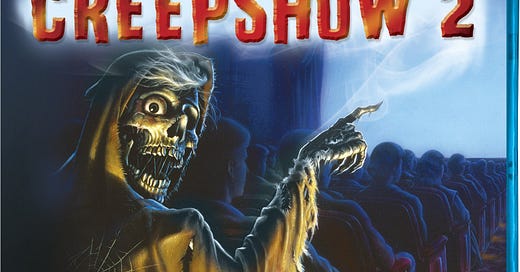





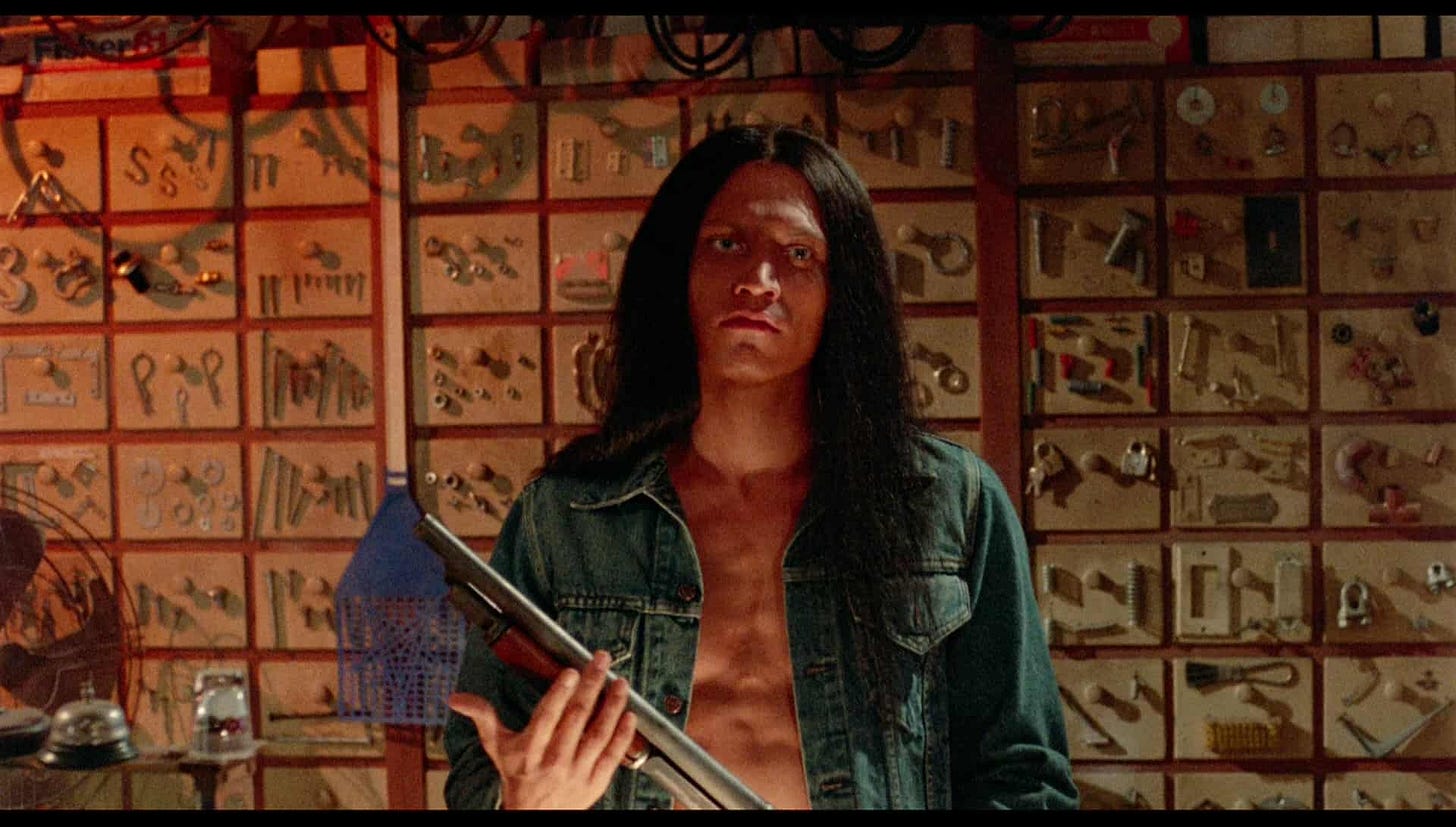

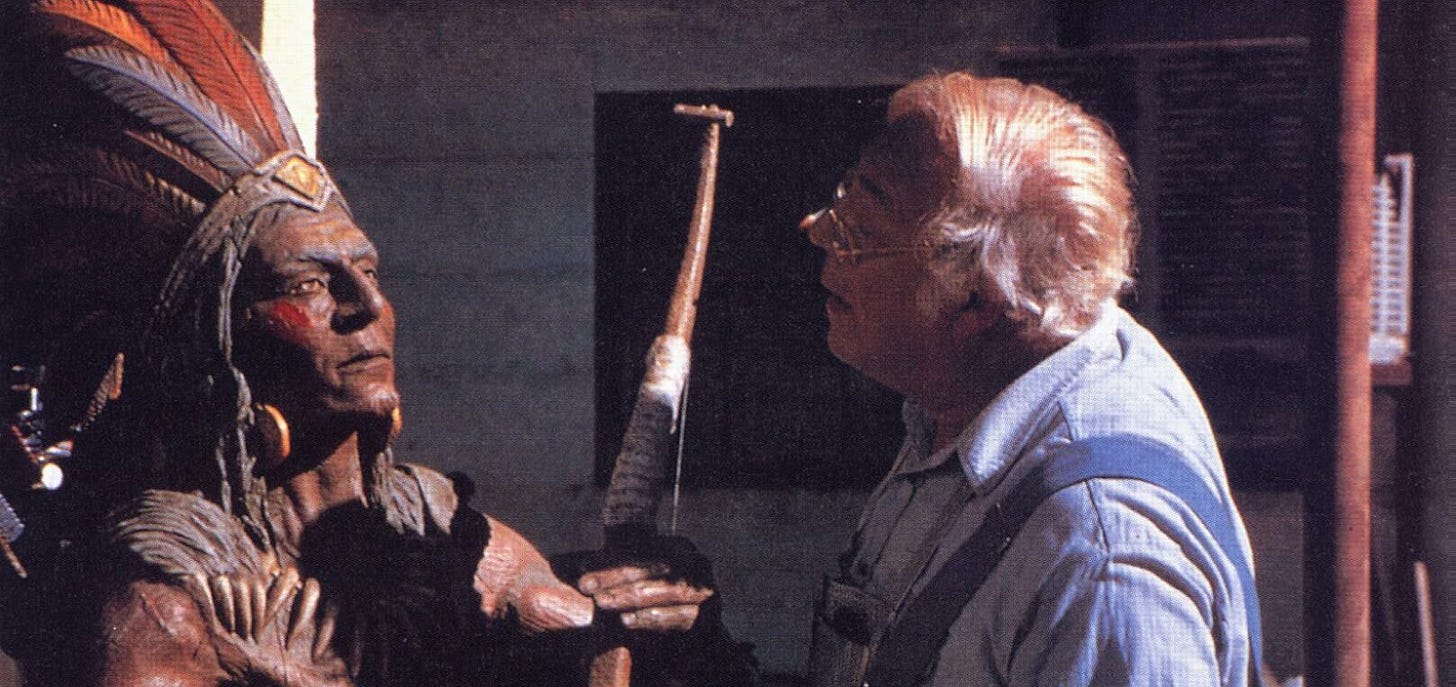
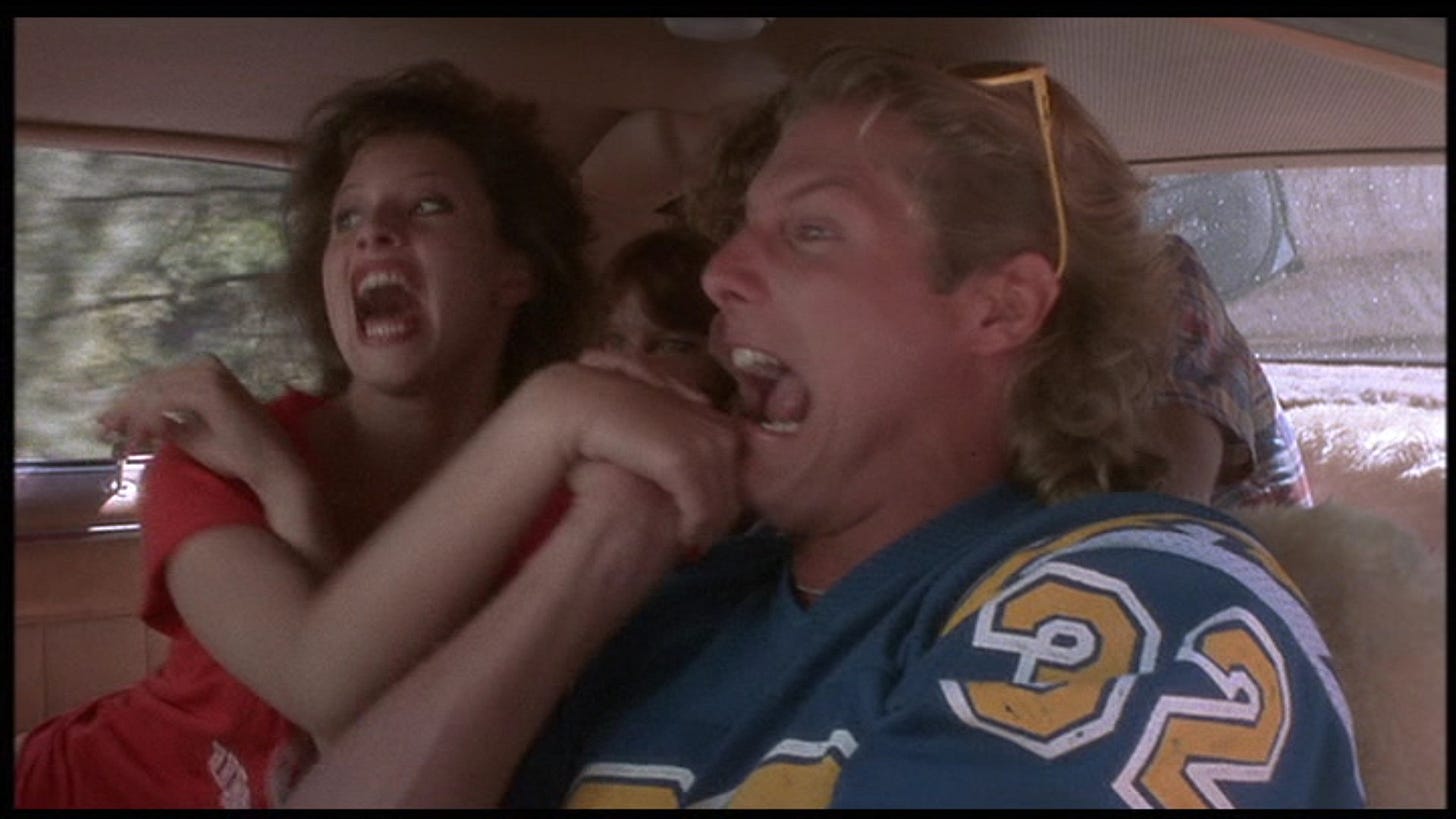

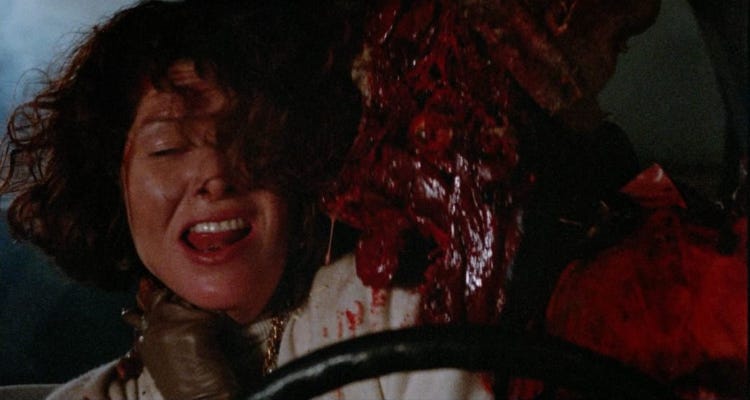
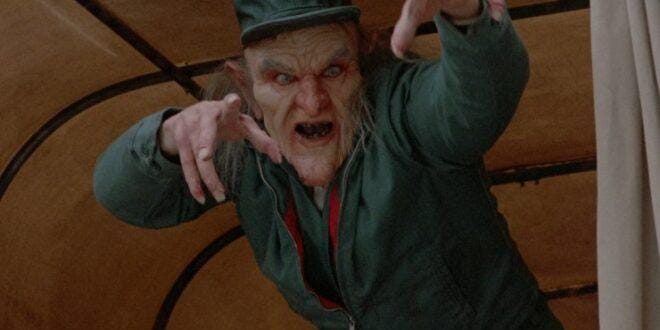
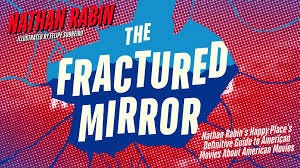
"The Raft" was a surprisingly faithful adaptation of the original story -- an occurrence far too rare in King adaptations. All it needed was a bigger budget, and it could have been as genuinely freaky as "The Blob" (1988).
And I had forgotten about "The Hitchhiker", but this review reminded me that it was a decent little morality tale. Once again, Romero's eye toward class conflict paid off.
(Incidentally, I believe the sentence in the second paragraph was meant to say, "George Romero, who directed the original film".)
Finally, it is CRAZY to see that the younger Whitemoon was played by freakin' Holt McCallany! Man did he grow up to be the perfect sort of old-school character actor. He was so great as Tench in "Mindhunter" -- it was like they went back to the 1970s to cast him.
I remember watching and enjoying this movie at the theater where I worked in my high school days. Despite the title and some of the names involved, it feels very, very different from its predecessor. Likely that was for budgetary reasons and that it was New World instead of WB. Anyway, although I liked it, I couldn't help but think that the oil slick, or whatever it was in "The Raft" looked like a plastic lawn bag floating in the lake until it started preying on the teens - however the wave at the end genuinely surprised me (I hadn't seen the trailer where it's featured).